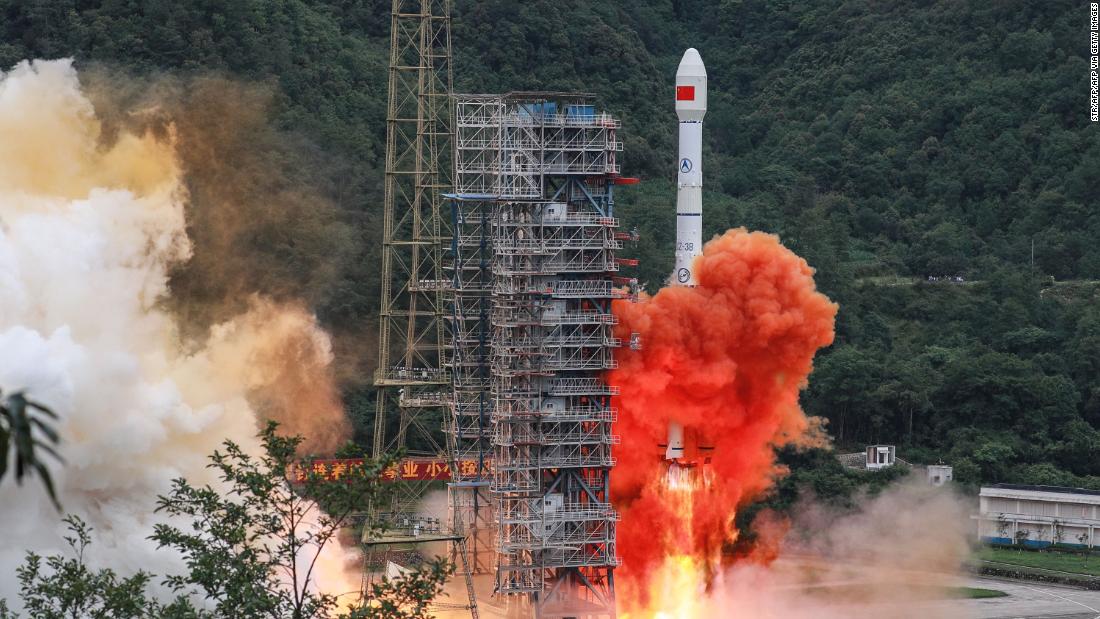China launched the last satellite in its Beidou navigation network on Tuesday, completing a new rival to GPS and cementing its place in an elite group of countries with their own global navigation satellite systems (GNSS).
To date, there are only four major GNSS networks: GPS (US), GLONASS (Russia), Galileo (European Union) and now Beidou. India and Japan operate smaller systems.
Most people are familiar with GPS, which is used for everything from personal navigation on your smartphone to tracking planes and container ships around the world.
Beidou is China’s alternative system. It’s named after the Chinese word for the Big Dipper constellation, and has taken almost two decades to complete.
In a commentary published Tuesday in the People’s Daily, the Chinese Communist Party mouthpiece, the Beidou navigation network was described as belonging “to the whole world and all mankind.”
There are hopes in China that Beidou could be a global competitor to GPS, but the US option still has “absolute market share,” said Song Zhongping, a Chinese military expert who has worked with China’s Ministry of Civil Affairs and National Development and Reform Commission.
Experts said that China’s push for a new navigation network was also driven by a desire to reduce its dependence on America’s GPS, particularly in its armed forces.
There are few other advantages to a country having its own GNSS network than prestige, according to Andrew Dempster, director at the Australian Centre for Space Engineering Research (ACSER) at the University of New South Wales.
“To be honest with Beidou there’s nothing unique about it,” Dempster said. “It is simply this prestige thing that the Chinese want to say they’ve got it. It’s the same thing as going to the moon, planting a flag for the sake of it,” Dempster said.
History of GPS
The United States and Russia were first to start construction on their own GNSS navigation arrays at the height of the Cold War.
GPS was first proposed by the US Department of Defense in 1973, while the Russian GLONASS system began six years later in 1979. Both were declared “fully operational” in 1995.
Most systems, such as GPS, work by using four satellites at a time to measure the distance it takes for a signal to reach a point on the ground — your smartphone for instance — to calculate where exactly that point falls on a map.
China began building its navigation array in 1994. Work on Galileo started much later, but the EU network is expected to become fully operational by the end of 2020.
The US, Russian and now Chinese Beidou systems are either partially owned or operated by the military, Song said. The Galileo network is the only purely civilian GNSS system.
All four of those systems are made up of at least 20 satellites, according to GPS’s website.
Experts said that the reach and effectiveness of the current global GNSS networks leaves little justification for additional arrays to be built.
Suelynn Choy, associate professor at RMIT’s School of Science Cluster in Melbourne, said it can be useful to have an alternative if a specific GNSS network goes offline unexpectedly, as the Galileo network did in July 2019.
“From a civilian perspective it is good because we are not heavily reliant on a single system … it could cause the global economy quite a fair bit of trouble,” she said.
But the other benefit is it gives the operating country a military advantage over its competitors, ASCER’s Dempster said. If an opposing army is navigating using your GNSS network, you can just switch off their signal.
Military advantages
Dempster said that while debate has raged globally in recent years over the risks of using Chinese internet infrastructure, such as 5G provider Huawei, the same concerns didn’t apply to GNSS systems.
“It transmits a signal, you have a receiver and unless there’s some other channel, you don’t communicate back to the GPS system or the Beidou system,” he said.
However there is a risk when militaries are using an enemy country’s GNSS system, which the controlling government can distort or just shut down as necessary.
Writing for China Brief in 2014, former intelligence officer and analyst Kevin McCauley said that for years, the Chinese People’s Liberation Army (PLA) had relied mostly upon GPS for its navigation.
“But Beidou terminals now appear to be deployed to a greater extent throughout the PLA, while providing capabilities not previously available to the Chinese military,” McCauley said.
Now that the system is complete, the PLA and the Chinese government can rely on their own navigation array.
Dempster said that this could be important to Beijing, especially as tensions with the US grow across a range of fronts.
“It would make sense for them to have their own military system because it there was a conflict in the South China Sea over these islands, GPS could be denied to them and the US military could still use the military signal,” he said.
“So they’d have satellite navigation and the Chinese would not.”
Experts said that China might not just be pushing Beidou as a potential civilian competitor to GPS. Already, close ally Pakistan has been granted access to the Beidou network, switching it away from the US alternative. Experts said access could be offered to countries who sign on to Beijing’s signature Belt and Road infrastructure initiatives.
“No matter which industry, a minimal error may result in wide divergence. Beidou can guarantee perfect accuracy,” Song said. “Navigation satellites are the best products of military-civilian [cooperation].Their application value and market space are huge.”- CNN Business





0 Comments